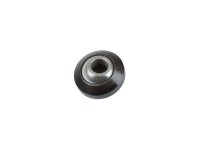I've put nearly 800 hours on my PT-425 and am starting to get concerned about the amount of play in the four joints of the lifts arms.
I lubed them every eight hours, but even when I first got the PT it seemed that the balls of the lift arms turned on the bolts (got lube into that area all the time also, just in case).
The bolts are not loose, but no matter how tight they are, the ball doesn't turn in the lift arm, just on the bolt.
So - I'll probably replace the bolts at some point, but wonder if there's a way to replace the balls.
The good news is that the looseness of those joints and the quick attach plate play from wear over the years, when I plow the blade has enough play that either end can go up or down an inch or so.
Same thing is bad news when I'm trying to use finesse grading!
Thanks!
I lubed them every eight hours, but even when I first got the PT it seemed that the balls of the lift arms turned on the bolts (got lube into that area all the time also, just in case).
The bolts are not loose, but no matter how tight they are, the ball doesn't turn in the lift arm, just on the bolt.
So - I'll probably replace the bolts at some point, but wonder if there's a way to replace the balls.
The good news is that the looseness of those joints and the quick attach plate play from wear over the years, when I plow the blade has enough play that either end can go up or down an inch or so.
Same thing is bad news when I'm trying to use finesse grading!
Thanks!
